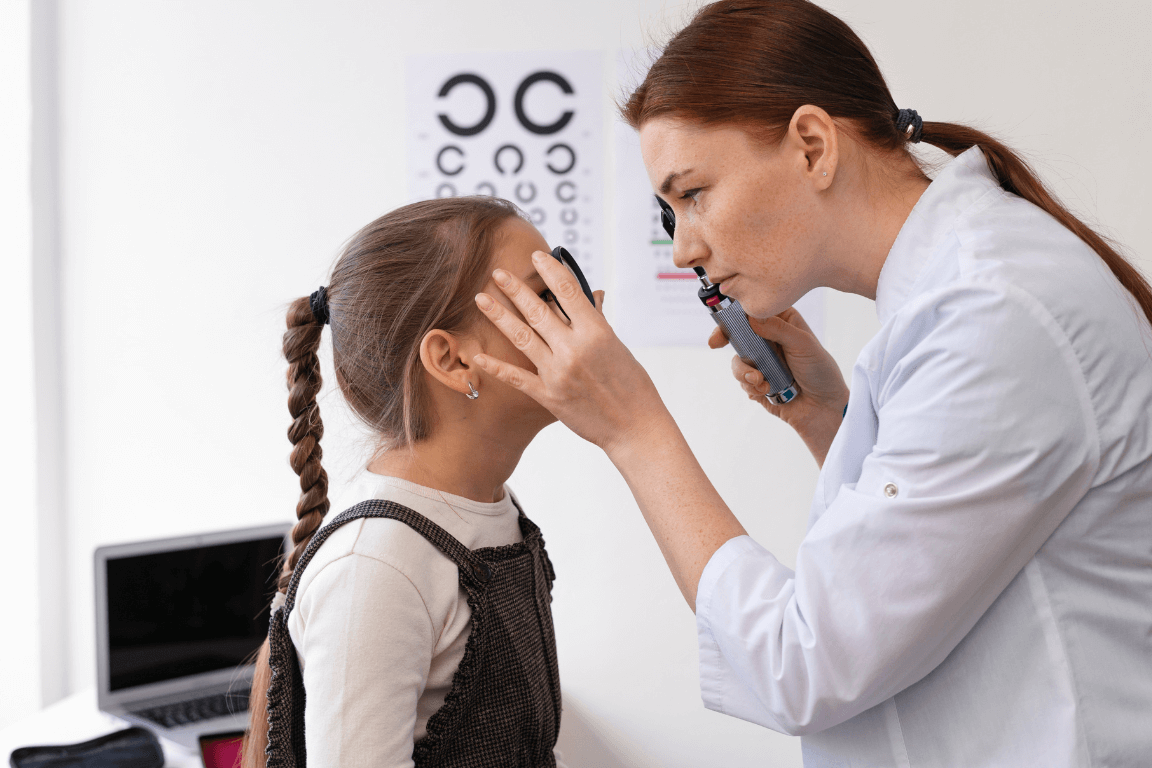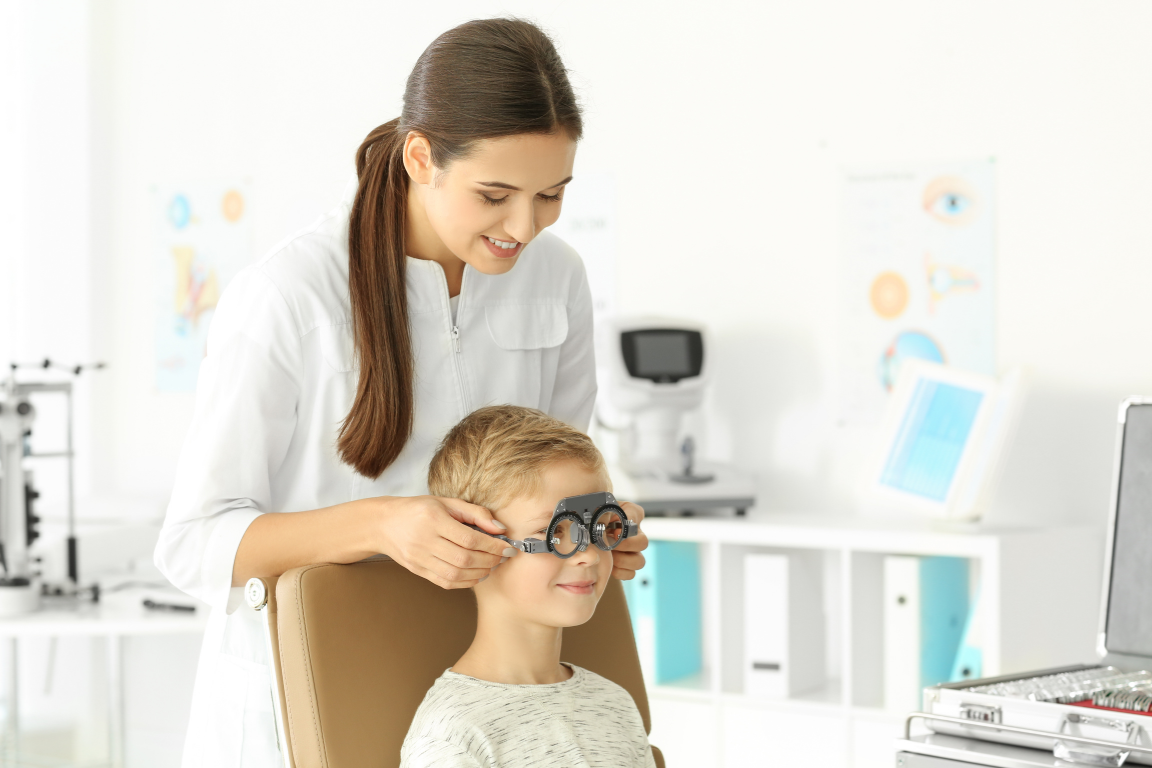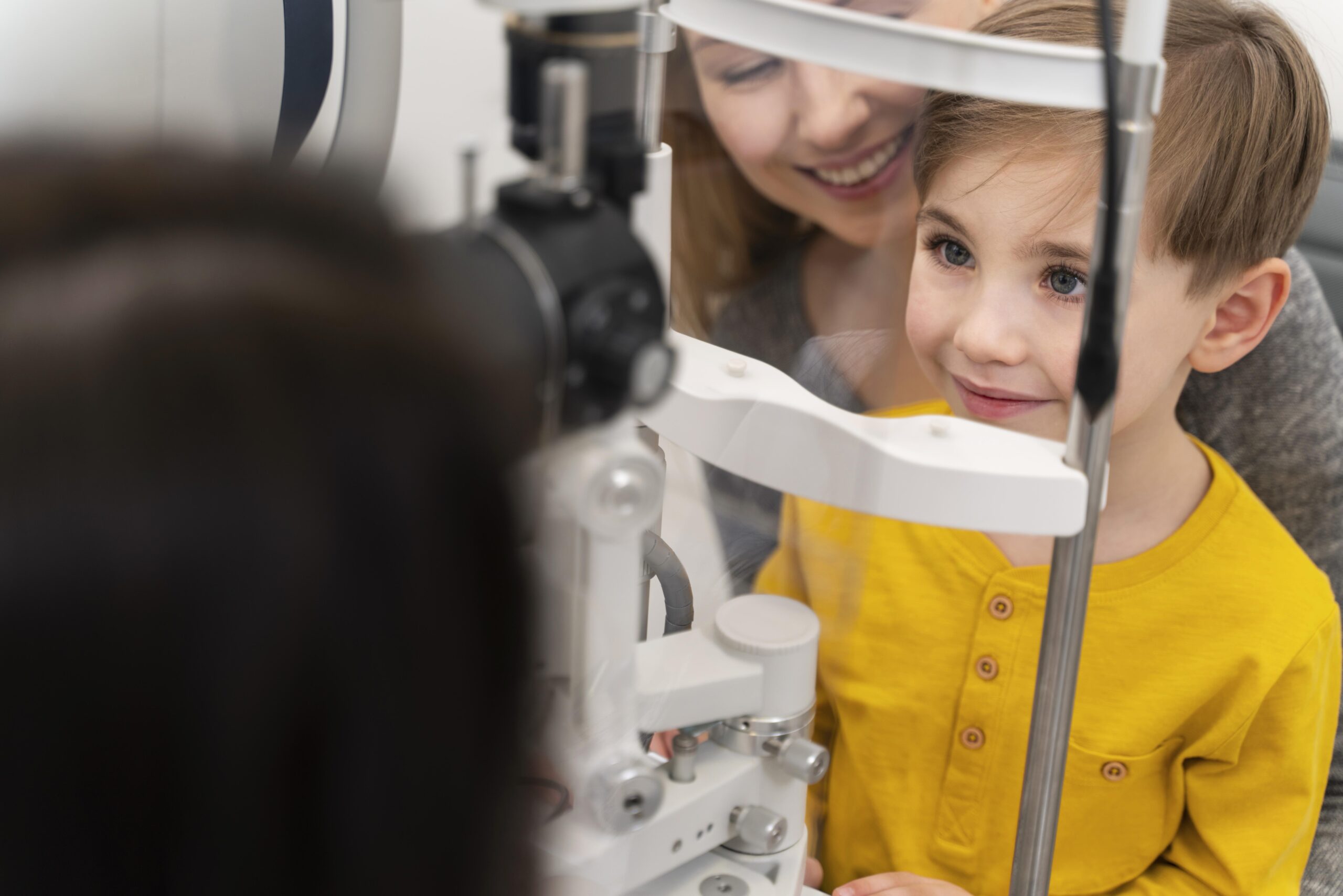Encountering a patient with a disability, whether intellectual, developmental, or physical, can be challenging for a clinician with little exposure. For some, the experience can even be downright confronting. However, as an optometrist, you are likely to come across these patients in the course of your daily practice, given that around 15% of the global population live with some type of disability.¹ As a clinician, your job is to treat these individuals with respect and manage their eyecare concerns to the best of your ability, while accommodating any needs for a modified exam.
Everyone Deserves Access to Quality Eye Care
Though it may be challenging to perform a thorough eye test on some patients with special needs, these individuals are no less deserving of high-quality eye care. Patients with intellectual and developmental are also known to be at a higher risk of ocular and vision disorders,¹ making it even more important to approach these individuals with the intention of providing comprehensive eye care.
Down syndrome, a genetic condition also termed trisomy 21, may be one of the most encountered intellectual disabilities. Although many of these patients are verbal and can communicate, they may still have difficulties expressing themselves or accurately reporting symptoms or complaints. Studies have demonstrated that patients with Down syndrome are more likely to suffer from refractive error, strabismus, cataracts, and keratoconus. Visual acuity also tends to be poorer in this population, even with fully corrected, or in the absence of, refractive error.¹
Patients with autism spectrum disorders are also not uncommon in routine optometry practice. This neurological condition is characterised by challenging social behaviour, poor ability to communicate, and hyperactivity, sometimes making it difficult to conduct a comprehensive eye exam or obtain reliable results. Individuals with autism can be more prone to nystagmus, strabismus, and astigmatic refractive error,¹ as well as keratoconus and oculomotor dysfunction.²
Attention-deficit/hyperactivity disorder (ADHD) is a psychiatric disorder that has been associated with refractive error and reduced stereo acuity. Hyperopia also tends to be seen more frequently in children with ADHD, in contrast to the more common myopia among children without ADHD.¹
Other neurodevelopmental disorders can include specific learning disorders, communication disorders, and motor disorders, which can also interfere with cooperating with a standard eye test. Physical disabilities an optometrist may encounter in practice can include multiple sclerosis, muscular dystrophy, cerebral palsy, or paraplegia. Strokes, brain tumours, and degenerative neurological diseases can lead to acquired brain injury, manifesting as cognitive, physical, or mental dysfunction.³ All of these challenges in ability require an optometrist to modify their approach to the patient, both when communicating to the patient and caregivers as well as performing the practical aspects of an eye exam.
Tips on Managing a Patient with Special Needs
First and foremost, it’s important to recognise that just as fully-abled patients are unique and individual, so are patients with a disability. Though there may be some best practice tips on approaching differently-abled patients, remember that the eye exam will need to be tailored to the individual; one patient with Down syndrome may not respond to you the same way as the next patient with Down syndrome.
1. Treat the patient with respect
Though the patient before you may have an intellectual disability or not give a typical reaction to social cues, they are no less deserving of respect and recognition. A greeting should be offered directly to the patient (yes, even if you’re not expecting them to respond). If the patient is at all verbal, it’s worth asking your questions during history-taking and testing directly to them. If you need further details or confirmation about their replies from an attending caregiver, then this can be obtained after you’ve communicated with the patient.
Consider the comfort of your patient as well, as sensory issues are common among special needs individuals.² This may mean giving them extra physical space while they adjust to being in the consulting room, modifying the volume of your voice, or giving a thumbs up instead of a high five.
2. Involve the family and caregivers
Not all, but many patients with special needs will attend with a family member or carer. Involving the attending carer in your examination can help to make your examination easier and possibly more accurate.
During the appointment, you can observe how the carer and patient interact. Take note of the language the carer uses – do they simplify their communication to accommodate for a cognitive disability? Is the patient often looking to their carer to help answer your questions during the medical history? Does the patient require physical assistance from their carer, such as being lifted into the exam chair or wiping their nose? If possible, you may also consider approaching the carer before the exam to ask for their recommendations on making the appointment as easy as possible. For example, the carer may disclose that the patient has a favourite song that can help to hold their attention, may be averse to a close physical presence (such as during ophthalmoscopy), or may have difficulty identifying letters of the alphabet.
3. Consider the language you use
Language is a powerful tool and, in the context of disability, can be used either to demonstrate inclusivity and respect or to disempower and offend. One concept to be mindful of is person-first language versus identity-first language.²,⁴ An example of the former would be “I’m experienced with treating people with cerebral palsy”, while identity-first language would be “I’m experienced with treating cerebral palsy patients”. Different individuals may have a preference for one over the other.
Also, be aware that some populations may not actually identify themselves as disabled at all; these can include those from deaf communities or those with autism spectrum disorder.⁴
It’s worth bearing in mind that even if you believe the patient themselves would not be able to understand you, their family members or caregivers can be just as offended through the use of injudicious word choice.
4. Be flexible with your tests
Just as a paediatric eye exam is different from that for an adult, so does an examination for a person with special needs require modification. A standard full eye test may be exhausting and stressful for the patient, so be open to allowing the patient to take a break in a quiet place or rescheduling the rest of the exam for another time.
You may also need to get creative with your testing methods, such as performing a test with the patient in a wheelchair, on the floor, or while playing with a toy. Depending on the degree of intellectual disability, you may find yourself reliant on objective measures of visual acuity or refraction; however, never assume that the patient cannot cooperate with a subjective test without trying first.
Summary
Conducting an eye exam on a patient with an intellectual, developmental, or physical disability can be challenging. However, remember that these patient populations are often at a higher risk of various eye conditions and vision disorders. Approaching these individuals with respect and a willingness to provide them with high-quality eyecare may require an extra degree of flexibility and patience, but it’s always worth it.
References
- Holhos LB, Coroi M, Hainarosie AI, Holhos T, Lazar L. Children with Disabilities/Special Health Needs and Ocular Refractive Disorders. Maedica (Bucur). 2021;16(2):255-260.
- Eyes on Eyecare. Best Eye Exam Practices for Patients with IDDs. https://eyesoneyecare.com/. 2023. Available at: https://eyesoneyecare.com/resources/best-eye-exam-practices-for-patients-with-idds/. (Accessed September 2023).
- National Disability Services. Disability Types and Description. https://www.nds.org.au/. Available at: https://www.nds.org.au/disability-types-and-descriptions. (Accessed September 2023).
- People with Disability Australia. PWDA Language Guide: A guide to language about disability. https://pwd.org.au/. 2021. Available at: https://pwd.org.au/wp-content/uploads/2021/12/PWDA-Language-Guide-v2-2021.pdf. (Accessed September 2023).





